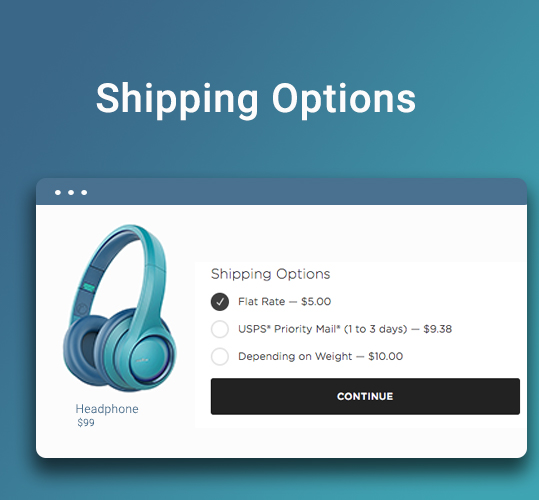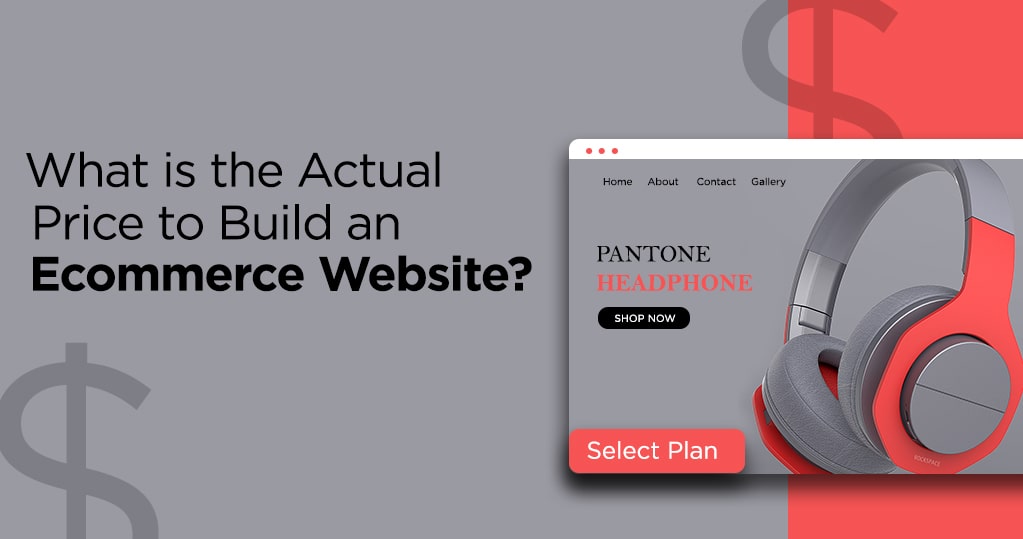Websites from which sales and purchases are carried out are called ecommerce websites. An ecommerce website has a catalog section to showcase products or services. These products or services are integrated with a shopping cart. These shopping carts enable the users to checkout and pay for the products or services and complete the ecommerce process. The price of an ecommerce website is dependent on many factors including the features required in the website. Other costs involve domain registration, hosting space subscription, and annual maintenance contract cost (if subscribed). The ecommerce website development cost will depend mostly on the features & functionality required.
The Features an Ecommerce Website Must Have
1. Product Catalogue

This is a product showcase section. All products to sell online are listed here in different categories and sub-categories. From here, we can go to the category page, from wherein we can either go to the sub-categories page (if available), or the listed products. It also contains some description that explains what this category has. Sub-category pages have products listed with a title, a short description, and a small image. After clicking on the product title or product image, a user reaches the detailed product page. The product page contains everything about the product, product description, various images with enlarging options, product variations, properties, and product price.
2. Shopping Cart
A shopping cart is integrated with a product catalog on the detailed product pages. With the help of it, a user can select a product to purchase, usually called add to cart. After adding a product to the online cart, users can browse different catalog pages for different products and select more products to purchase. After finalizing which products a user is going to purchase, the user views the cart to review product selection. Here the total cost of the purchase, including tax calculation, shipping cost, and other charges, is reflected. The user needs to checkout for the payment processing. After checkout, a user is asked for a payment method with which the user wishes to pay.
3. Payment Methods
Various payment methods can be integrated into the shopping cart of the website. Integrating payment gateways to the cart to get paid is the most convenient method while practicing ecommerce. Ecommerce payment gateways assure the most important part of an online transaction, security. With assured data security, a user can pay through debit/credit card, online banking, and another localized way for the ecommerce transaction using a payment gateway. Different geography can have different popular payment gateways. For example, PayPal is widely used by US merchants while Razorpay & Paytm are widely used by Indian ecommerce retailers. Overall PayPal is the global leader among the payment gateways. Another popular ecommerce payment method is Cash-On-Delivery (COD). This too can be integrated into the online cart.
4. Shipping Options

There are many ecommerce shipping companies across the globe providing logistics solutions to deliver an online order. Examples of such shipping companies are FedEx, DHL, USPS, and others. To automate the process of product delivery, integrate these shipping companies into your ecommerce shopping cart. This makes the whole delivery process hassle-free. Depending upon the shipping option selected by the user, different shipping charges can be applied.
5. Content Management System
Besides the front-end of the ecommerce website as stated above, there is a need for a website administrative module to manage the various content of the website. The administrative module is a password-protected back-end system to add, edit, or delete various types of content on the ecommerce website. This is an important section for ecommerce sellers to update prices of the products at times, add new products, manage product inventory, and so on. Besides these, other web page content too can be controlled by using this section.
6. Reporting for Back-office
The website administrative module should have an order management section, invoice management section with other sections. The most important part is the inclusion of various reports in a section. The various reports indicate the key matrix which requires attention with a priority. For example, the inclusion of a report on abandoned cart users can help in the recovery of those sales.
Above are the basic ecommerce features almost every website requires to sustain the online business. There are other advanced features that might be desired by online retailers. For example, Wish-list, the product review & rating system, and the list go on.
The cost of ecommerce website building depends on the following approach
A. Hiring a developer for hard coding
A full-stack developer which takes care of every aspect of the website and makes it deliverable consumes more hours and applies more effort. This makes the ecommerce website costlier. The brighter side of this solution is it is a complete custom development and the developer can deliver whatever you think to include in the website. The developer can be hired on an hourly basis or the project basis.
Average Cost: US $5000
B. Hiring a developer for open-source ecommerce platforms
Open-source ecommerce platforms like WooCommerce and Magento etc. might cost lesser if chosen as the development platform. Website building using such platforms takes lesser efforts than custom hard-coding development. These make website building easier and faster. Ecommerce developers found many common elements ready-made and hence they don’t require coding for those. As per the usage data, small business owners use WooCommerce and medium & large merchants prefer to hire Magento developer over others.
Average Cost: US $4000
C. Building an ecommerce website using do-it-yourself platforms
Do-it-yourself ecommerce platforms allow sellers to build a website on their own. This doesn’t require programming/ designing skills or any prior experience. Choose a theme, customize the data, upload products, preview, and publish your website. These are the usual steps to build a website for an ecommerce business. These platforms offer a complete ecommerce solution a retailer might require. These are subscription-based online software-as-a-service platforms. This is the modern-day simplified business-friendly solution. These platforms take all botheration and ask retailers to focus on their core area, selling. Example platforms are Builderfly, BigCommerce, Shopify, etc.
Average Cost: US $3000
The bottom line is, the cost of building an ecommerce website depends on the required list of features and the approach of the development. As we shouldn’t re-invent the wheel, we should opt for the best do-it-yourself platform solution. This not only offers a complete solution without involving a third-party developer but also is cost-effective.








